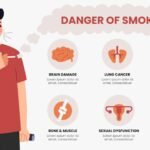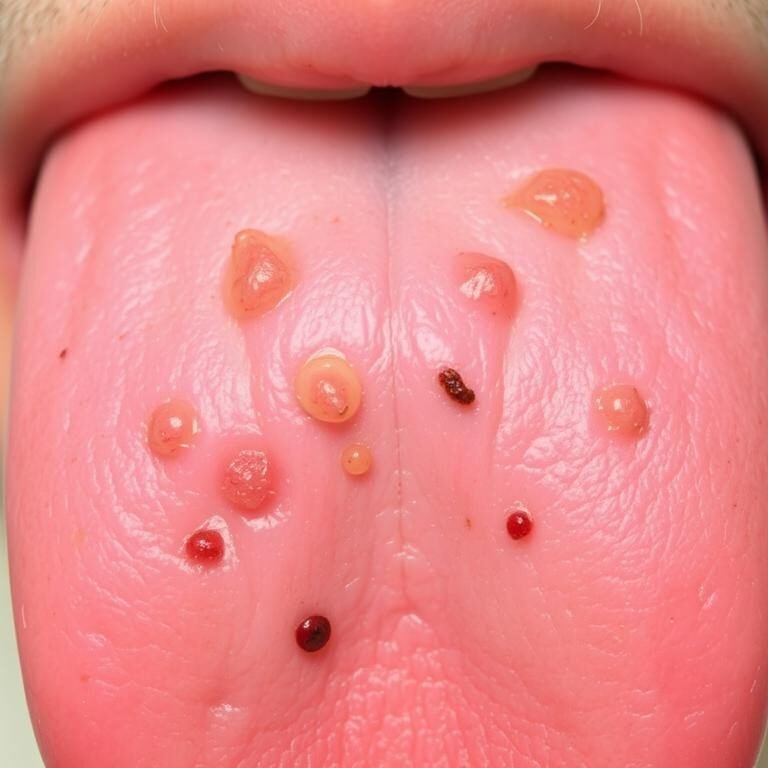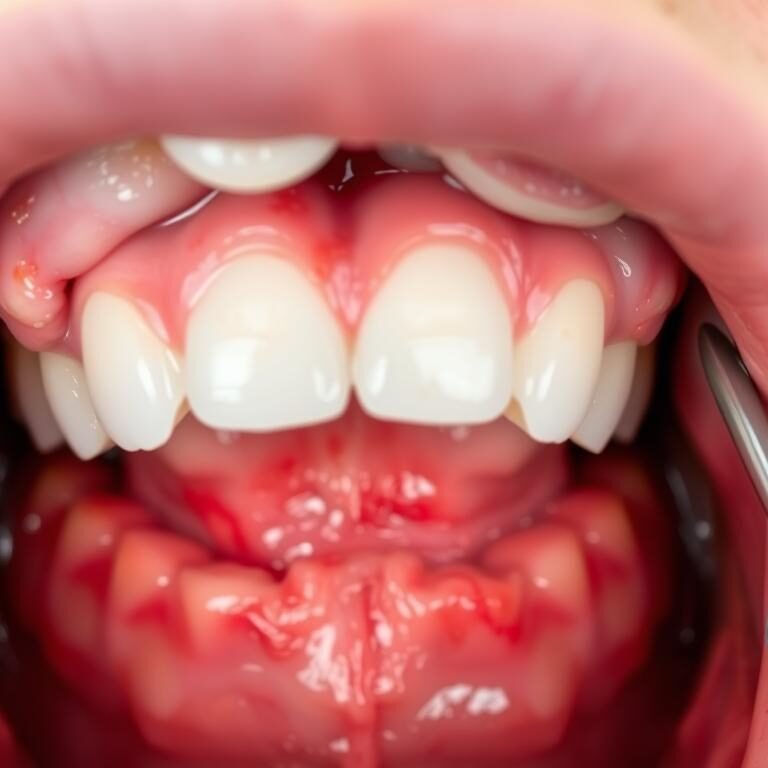Table of Contents
Understanding the Importance of Dental Health
Dental health plays a pivotal role in our overall well-being. It goes beyond having a bright smile; it encompasses the health and functionality of our teeth, gums, and mouth. Good oral hygiene and regular dental care are essential for maintaining optimal dental health and preventing various dental problems.
Neglecting dental health can lead to a multitude of issues, including tooth decay, gum disease, infections, and even tooth loss. Dental problems can be painful, affect our ability to eat and speak properly, and impact our self-confidence. Additionally, research has shown that poor dental health is linked to other systemic health conditions such as cardiovascular disease and diabetes.

Therefore, it is crucial to prioritize dental health and make it a regular part of our healthcare routine. Brushing and flossing daily, visiting the dentist for routine check-ups and cleanings, and following a healthy diet are simple yet effective ways to maintain a healthy smile and improve overall well-being. Remember, a healthy mouth contributes to a healthy body.
Common Dental Issues Leading to Tooth Extraction
Tooth extraction is a common dental procedure that may be necessary to address various dental issues. While dentists strive to preserve natural teeth whenever possible, there are certain conditions that may warrant the need for extraction. Understanding these common dental issues can help patients become proactive in maintaining their oral health.
One of the primary reasons for tooth extraction is severe tooth decay. When cavities are left untreated, they can progress to the point where the tooth becomes extensively damaged or infected. In such cases, tooth extraction may be the only viable solution to prevent the spread of infection to surrounding teeth and gums. Additionally, impacted teeth, which are teeth that fail to fully erupt or grow in an abnormal position, may need to be extracted to prevent discomfort, crowding, or damage to adjacent teeth.
Gum disease, particularly in its advanced stages, can also contribute to the need for tooth extraction. When the supporting tissues and bones around the teeth become infected and weakened, the teeth can become loose and unstable. In severe cases, extraction may be necessary to prevent further damage and the spread of the infection to other areas of the mouth.

In some cases, orthodontic treatment may require the extraction of one or more teeth. This is often done to alleviate overcrowding, create space for proper alignment, or address bite issues. By strategically removing certain teeth, orthodontists can ensure that the remaining teeth can be aligned properly, resulting in a more functional bite and an improved aesthetic appearance.
Lastly, trauma or injury to the mouth can lead to extensive damage to a tooth. If the tooth is fractured, broken, or severely displaced, extraction may be necessary depending on the extent of the damage. Dentists will carefully evaluate the condition of the tooth and consider other treatment options before recommending extraction as a last resort.
It is important for individuals to prioritize their dental health and seek regular dental check-ups to catch any potential dental issues early on. By maintaining good oral hygiene practices and promptly addressing tooth decay, gum disease, and other dental issues, the need for tooth extraction can often be avoided.
Impact of Untreated Dental Problems on Overall Health
Maintaining good oral health goes beyond having a beautiful smile. It is crucial to understand the significant impact that untreated dental problems can have on our overall health. Poor oral health has been linked to various systemic conditions, including cardiovascular disease, diabetes, respiratory infections, and even adverse pregnancy outcomes.
Research studies have shown that the bacteria present in untreated dental infections can enter the bloodstream and travel to different parts of the body, leading to the development or exacerbation of systemic diseases. For instance, the inflammation caused by gum disease can promote the progression of cardiovascular disease by contributing to the formation of arterial plaque.

Moreover, individuals with untreated dental problems are more likely to experience nutritional deficiencies due to difficulty in chewing and consuming a nutritious diet. This can further weaken their immune system, making them more susceptible to infections and other health issues.
Therefore, it is essential to prioritize our dental health and seek timely treatment for any dental issues. Regular dental check-ups, proper oral hygiene practices, and addressing dental problems promptly can significantly reduce the risk of developing systemic complications and improve overall health. It is always wise to consult with a trusted dentist who can provide expert guidance and personalized care tailored to individual needs.
Signs and Symptoms Indicating the Need for Tooth Extraction
Tooth extraction is a common dental procedure that is performed when a tooth is damaged, decayed or causing oral health complications. Recognizing the signs and symptoms indicating the need for tooth extraction is crucial in addressing dental issues promptly and preventing further problems.
One of the most common signs that may indicate the need for tooth extraction is persistent tooth pain. This pain can be caused by various factors, such as extensive decay, infection, or trauma to the tooth. In some cases, the pain may be accompanied by swelling or redness around the affected area. Additionally, a loose tooth or a tooth that has shifted position can also be a clear indication that extraction may be necessary. It is important to consult a dentist if any of these symptoms are present to determine the best course of action.
| Signs and Symptoms | Indication for Tooth Extraction |
|---|---|
| Severe Tooth Pain | Chronic pain that cannot be alleviated by other dental treatments. |
| Advanced Decay | Decay that has progressed extensively, compromising the tooth’s structure and integrity. |
| Periodontal Disease | Advanced gum disease leading to loosening of teeth and loss of supporting bone. |
| Tooth Mobility | Excessive movement of a tooth, indicating severe damage or loss of supporting structures. |
| Impacted Wisdom Teeth | Wisdom teeth that are unable to erupt properly, causing pain, infection, or damage to neighboring teeth. |
| Failed Root Canal | Persistent infection or inflammation following a root canal procedure, indicating treatment failure. |
| Overcrowding | Lack of space in the mouth, leading to misalignment or difficulty in orthodontic treatment. |
| Trauma | Severe injury to the tooth or surrounding structures, making it unfeasible to salvage the tooth. |
| Abscess or Infection | Presence of a dental abscess or severe infection that cannot be resolved with antibiotics or root canal therapy. |
| Orthodontic Treatment | Removal of teeth to facilitate orthodontic treatment and achieve proper alignment. |
Another sign that may warrant tooth extraction is severe dental decay or damage that cannot be effectively treated with other dental procedures. When a tooth is extensively decayed or damaged, there may not be enough healthy tooth structure remaining to support a restoration, such as a filling or crown. In such cases, extraction may be the only viable solution to alleviate pain and prevent further complications.
In conclusion, recognizing the signs and symptoms indicating the need for tooth extraction is essential in maintaining good oral health. Persistent tooth pain, loose or shifted teeth, as well as severe dental decay or damage that cannot be effectively treated, are all indicators that extraction may be necessary. Consulting a dentist at the first sign of any of these symptoms can help in timely intervention and prevent oral health problems from worsening.
Dental X-Rays: A Valuable Tool for Determining Extraction Necessity
Dental X-rays play a crucial role in assessing the need for tooth extraction. These imaging techniques provide dentists with detailed information about the condition of the teeth, roots, and surrounding bone structure, helping them make informed decisions about extraction requirements. By capturing images of the teeth and jaws, dental X-rays reveal hidden problems that may not be visible during a routine examination.
One of the key benefits of dental X-rays is their ability to detect decay or damage that is not immediately obvious. This allows dentists to identify early signs of infection or decay and determine whether extraction is necessary. X-rays can also help in evaluating the positioning of teeth, particularly in orthodontic cases. By examining the relationship between the teeth and the surrounding bone structure, dentists can identify issues such as overcrowding or impacted teeth, which may require extraction for proper alignment.
Overall, dental X-rays are an invaluable tool in assessing extraction necessity. By providing detailed images of the teeth and their surrounding structures, these diagnostic tools enable dentists to evaluate the condition of the teeth and make informed decisions about extraction. Through the use of X-rays, dentists can detect hidden problems, evaluate tooth positioning, and ensure the best course of action for their patients’ dental health.
The Role of Dentists in Assessing Extraction Requirements
Dentists play a crucial role in assessing the need for tooth extraction. As oral health experts, they are equipped with the knowledge and experience to evaluate various factors that determine whether extraction is necessary. Through a comprehensive examination, dentists assess the condition of the tooth and surrounding tissues, considering aspects such as decay, injury, impaction, and infection. They also take into account the patient’s overall oral health, medical history, and individual circumstances.
During the assessment, dentists may use various diagnostic tools, including dental X-rays, to aid in their evaluation. These imaging techniques provide valuable information about the tooth’s structure, position, and condition, helping dentists make informed decisions regarding extraction. By carefully analyzing the data obtained, dentists can determine the most appropriate course of action, considering factors like the tooth’s prognosis, its impact on neighboring teeth, and the potential for complications if extraction is not performed.
| Role of Dentists in Assessing Extraction Requirements |
|---|
| Assessment |
| 1. Clinical Examination: Dentists conduct thorough clinical examinations to evaluate the condition of the tooth, surrounding tissues, and overall oral health. They check for signs of decay, infection, gum disease, and assess the stability of the tooth in question. |
| 2. X-ray Analysis: Dentists utilize X-rays to visualize the internal structure of teeth and surrounding bone. This helps in identifying issues such as impacted teeth, bone loss, and the presence of cysts or tumors that may necessitate extraction. |
| 3. Periodontal Assessment: Dentists evaluate the health of the gums and supporting structures. Advanced gum disease or periodontitis can lead to tooth loss, and in some cases, extraction may be the best course of action to preserve overall oral health. |
| Decision-making |
| 4. Risk Assessment: Dentists assess the risks associated with retaining the tooth versus extracting it. Factors such as the extent of damage, prognosis for successful treatment, and impact on adjacent teeth are considered in decision-making. |
| 5. Patient Consultation: Dentists discuss findings with the patient, explaining the reasons for extraction if necessary, and presenting alternative treatment options if available. They address concerns, answer questions, and ensure the patient is well-informed and comfortable with the decision. |
| Preparation and Planning |
| 6. Treatment Planning: Dentists develop a comprehensive treatment plan that outlines the extraction procedure, including pre-operative preparations, anesthesia options, anticipated outcomes, and post-operative care instructions. |
| 7. Referral if Necessary: In complex cases or when specialized care is needed, dentists may refer patients to oral surgeons or other dental specialists for further evaluation and treatment. |
| Follow-up Care |
| 8. Post-operative Monitoring: Dentists provide follow-up care to ensure proper healing and recovery after extraction. They assess healing progress, address any complications, and may recommend additional interventions such as dental implants or prosthetics to restore function and aesthetics. |
| 9. Long-term Oral Health Management: Dentists emphasize the importance of ongoing oral hygiene practices and regular dental check-ups to maintain oral health and prevent future issues that may necessitate extractions. They may provide guidance on diet, oral care techniques, and lifestyle habits to support optimal oral health outcomes. |
In conclusion, the role of dentists in assessing extraction requirements is vital to maintaining optimal oral health. Their expertise allows them to thoroughly evaluate the condition of a tooth and determine whether extraction is necessary. By relying on their knowledge, experience, and diagnostic tools, dentists can make well-informed decisions that prioritize the patient’s oral health and overall well-being.
Tooth Decay: When Extraction is the Only Solution
Tooth decay is a common dental issue that affects individuals of all ages. When left untreated, it can lead to severe complications and can even result in the need for tooth extraction. Tooth decay occurs when bacteria in the mouth produce acids that gradually deteriorate the tooth enamel. This process can be accelerated by poor oral hygiene habits, excessive sugar consumption, and certain medical conditions.
In the early stages of tooth decay, the damage can often be repaired with dental fillings or other restorative treatments. However, in cases where the decay has progressed significantly, extraction may be the only solution. This is typically the case when the tooth is severely weakened, the decay has reached the pulp or nerve of the tooth, or when there is a risk of infection spreading to neighboring teeth or the jawbone. Extracting the decayed tooth not only alleviates pain and discomfort, but also prevents further damage and promotes overall oral health.
Gum Disease and Its Connection to Tooth Extraction
Gum disease, also known as periodontal disease, is a common dental issue that can have serious implications if left untreated. One of the potential consequences of advanced gum disease is the need for tooth extraction. This connection between gum disease and tooth extraction stems from the progressive nature of the condition.
When gum disease is not properly managed, it can lead to the destruction of the supporting structures of the teeth, including the gums, periodontal ligaments, and jawbone. As a result, the affected teeth may become loose and unstable. In severe cases, tooth extraction may be necessary to prevent further spread of infection and to preserve the overall oral health.
Additionally, gum disease can worsen the condition of the surrounding teeth and tissues, increasing the likelihood of future dental problems. Therefore, it is crucial for individuals with gum disease to seek early treatment and adopt proper oral hygiene practices to avoid the need for tooth extraction.
Wisdom Teeth: Reasons for Removal and Timing
Wisdom teeth, also known as third molars, are the last set of teeth to emerge in the mouth. In many cases, these teeth can pose a variety of problems and may need to be removed. One of the primary reasons for their removal is due to the lack of space in the mouth for them to properly erupt. This can lead to the teeth becoming impacted, meaning they are unable to fully break through the gums. Impacted wisdom teeth can cause pain, infection, and damage to nearby teeth, which is why extraction is often recommended.
Timing is also an important consideration when it comes to wisdom teeth removal. Dentists typically recommend removing these teeth between the ages of 17 and 25, before the roots are fully formed and the teeth have the chance to cause further complications. The younger a patient is when the extraction is performed, the easier the procedure tends to be and the faster the recovery time. However, each case is unique, and the decision to remove wisdom teeth should be made in consultation with a dental professional who can assess the individual’s specific situation.
Removing wisdom teeth can help prevent a variety of oral health issues and ensure the overall well-being of the patient. It is important to consult with a dental professional to determine the need for extraction and the appropriate timing. By addressing this issue proactively, individuals can avoid potential complications and maintain optimal oral health.
Orthodontic Treatment: When Tooth Extraction is Essential
Orthodontic treatment plays a significant role in aligning the teeth and improving the overall appearance of the smile. In some cases, tooth extraction becomes an essential part of the orthodontic treatment plan to achieve optimal results. While orthodontic treatment aims to straighten the teeth and correct any bite issues, there are instances where the mouth may not have enough space to accommodate all the teeth comfortably.
When the available space is insufficient, extracting one or more teeth can create the necessary room for the remaining teeth to align properly. This strategic approach allows the orthodontist to achieve a balanced and beautiful smile while ensuring the long-term stability of the teeth. Although tooth extraction may sound intimidating, it is a routine and well-established procedure for orthodontic treatment, with minimal discomfort and manageable recovery time.

While each case is unique, your orthodontist will carefully evaluate the need for tooth extraction based on several factors, including the severity of the crowding, the size of your jaw, and the overall alignment issues. They may also consider the facial profile and the impact on your bite. Rest assured that the decision to extract a tooth is not taken lightly and is only recommended when necessary to ensure the success and effectiveness of your orthodontic treatment.
By combining the expertise of the orthodontist and the precise planning of tooth extraction, you can be on your way to achieving a confident and healthy smile. Throughout the orthodontic journey, your orthodontist will continuously monitor the progress and make any necessary adjustments to ensure the best possible outcome. Remember, tooth extraction is a valuable tool in orthodontic treatment and can contribute to your long-term oral health and a lifetime of smiles.
Trauma and Injury: Circumstances Requiring Tooth Extraction
In cases of trauma and injury, tooth extraction may be necessary to address the circumstances and ensure the overall health and well-being of the patient. Trauma to the teeth can occur due to accidents, falls, or sports-related injuries, and it can result in significant damage that cannot be repaired through other dental procedures.
One common circumstance that may require tooth extraction is when the tooth is severely fractured or broken beyond repair. In such cases, extracting the damaged tooth is often the most suitable option to prevent further complications, such as infection or damage to neighboring teeth. Additionally, if the tooth has been knocked out completely, immediate extraction may be necessary to minimize the risk of infection and promote proper healing.
It is crucial to note that the decision to extract a tooth following trauma or injury will depend on several factors, including the extent of the damage, the location of the tooth, and the individual patient’s overall oral health. Consulting with a skilled dentist is essential to assess the circumstances accurately and determine the best course of action for the patient’s specific situation.
Impacted Teeth: Understanding the Need for Extraction
Impacted teeth occur when a tooth fails to fully erupt through the gum line, usually due to lack of space or improper alignment. This can affect any tooth, but the most commonly impacted teeth are the third molars, also known as wisdom teeth. While not all impacted teeth require extraction, understanding the need for extraction is crucial for maintaining optimal dental health.

When left untreated, impacted teeth can lead to a range of complications. One common issue is infection, as the partially erupted tooth creates a pocket where bacteria can thrive. Furthermore, impacted teeth can result in the misalignment of surrounding teeth, causing jaw pain, headaches, and even changes in facial structure. In severe cases, cysts or tumors can develop around the impacted tooth, leading to more serious problems. Therefore, it is essential to consult with a dentist who can assess the situation and determine when extraction is necessary to prevent further complications.
Dental Infections: Preventing Spreading with Extraction
Dental infections can be a serious health concern if left untreated. Not only can they cause severe pain and discomfort, but they can also lead to more widespread infections and complications. Fortunately, in many cases, the spreading of dental infections can be prevented through tooth extraction.
When a tooth becomes infected, it can harbor bacteria and allow the infection to spread throughout the mouth. This can lead to gum infections, bone loss, and even systemic infections if the bacteria enter the bloodstream. By extracting the infected tooth, the source of the infection is removed, preventing any further spreading. Additionally, extracting the tooth allows for proper cleaning and disinfection of the affected area, ensuring that all traces of the infection are eliminated.
It is important to note that dental infections should never be ignored or taken lightly. If you suspect that you may have an infection, it is crucial to seek prompt dental attention. A qualified dentist will be able to assess the severity of the infection and determine if tooth extraction is necessary. Remember, early intervention is key to preventing the spreading of dental infections and maintaining optimal oral health.
Medical Conditions and Medications Impacting Tooth Extraction
Medical conditions and medications can have a significant impact on the success and safety of tooth extraction procedures. Certain health conditions can increase the risk of complications during or after extraction, while certain medications can affect the body’s response to the procedure. It is important for both patients and their dentists to be aware of these factors in order to ensure the best possible outcome.
Medical conditions such as diabetes, heart disease, and immune system disorders can affect the body’s ability to heal properly after a tooth extraction. These conditions can impair blood clotting, increase the risk of infection, and delay the healing process. It is crucial for individuals with these conditions to inform their dentist, as special precautions may need to be taken before, during, and after the extraction procedure.
Similarly, certain medications such as blood thinners, immunosuppressants, and bisphosphonates can also impact tooth extraction. Blood thinners can increase the risk of excessive bleeding during the procedure, while immunosuppressants can affect the body’s ability to fight off infections. Bisphosphonates, commonly prescribed for osteoporosis, can impair bone healing and increase the risk of complications after extraction. Dentists need to be aware of the medications their patients are taking and may need to adjust treatment plans accordingly, in consultation with the patient’s healthcare provider.
In conclusion, it is crucial for both patients and dentists to consider any medical conditions and medications that may impact the tooth extraction process. Open communication and collaboration between the patient, dentist, and healthcare provider are essential in order to minimize the risk of complications and ensure a successful outcome. By proactively addressing these factors, dental professionals can provide safe and effective care for their patients.
Preparing for a Tooth Extraction: What to Expect
Preparing for a tooth extraction can be a daunting experience, but understanding what to expect can help alleviate some of the anxiety. When you arrive at the dental office, you will be greeted by the friendly staff and asked to fill out any necessary paperwork. The dentist will then review your medical history and ask about any medications you may be taking.
Next, the dentist will perform a thorough examination of your teeth, gums, and jaw to determine the best course of action. This may include taking dental x-rays or other imaging tests to get a clear view of the tooth or teeth that need to be extracted. Once the dentist has gathered all the necessary information, they will discuss the procedure with you and answer any questions or concerns you may have.
On the day of the extraction, the dental team will ensure you are comfortable and may administer a local anesthetic to numb the area around the tooth. In some cases, sedation options may be available for those who experience anxiety or have complex dental needs. During the extraction, the dentist will carefully remove the tooth, taking care to minimize any discomfort or pain.
After the extraction, the dental team will provide instructions on how to care for the extraction site and promote healing. It is important to follow these instructions closely to prevent any complications. Additionally, you may be prescribed pain medications or given recommendations on over-the-counter pain relievers to help manage any discomfort.
In conclusion, being prepared for a tooth extraction can help ease any apprehension you may have. By understanding the steps involved and following post-extraction care instructions, you can ensure a smooth and successful healing process. Remember, your dentist is there to support and guide you throughout the entire process, so don’t hesitate to ask any questions or seek clarification on any concerns you may have.
Post-Extraction Care: Promoting Healing and Preventing Complications
Post-extraction care plays a vital role in ensuring optimal healing and minimizing the risk of complications after a tooth extraction procedure. Taking proper care of the extraction site can greatly contribute to a smooth recovery process and prevent potential issues that may arise.
Immediately after the extraction, it is essential to follow your dentist’s instructions to promote healing and minimize discomfort. This may include applying a clean gauze pad to control bleeding, avoiding spitting or rinsing forcefully, and refraining from consuming hot or hard foods to protect the healing site. Additionally, keeping the area clean is crucial to prevent infection. Gently rinsing your mouth with a saltwater solution or an antimicrobial mouthwash can help reduce the risk of infection and maintain overall oral hygiene. It’s also important to avoid strenuous activities and smoking, as these can hinder the healing process and potentially lead to complications. By adhering to these post-extraction care guidelines, patients can experience a smoother recovery and minimize the risk of complications.
How can I promote healing after a tooth extraction?
To promote healing after a tooth extraction, it is important to follow the dentist’s instructions. This may include keeping the extraction site clean, avoiding strenuous activities, taking prescribed medications as directed, and eating soft foods.
What are some common complications that can occur after a tooth extraction?
Common complications after a tooth extraction may include bleeding, infection, dry socket, delayed healing, or damage to surrounding structures. It is important to contact your dentist if you experience any unusual symptoms or complications.
Can I brush my teeth after a tooth extraction?
It is important to avoid brushing the extraction site for the first 24 hours after the procedure. However, you can gently brush the rest of your teeth. After 24 hours, you can start gently brushing the area around the extraction site with a soft-bristled toothbrush.
How long does it take for the extraction site to heal?
The healing time for an extraction site can vary depending on the individual and the complexity of the extraction. In general, it takes about 1-2 weeks for the gum tissue to heal completely. However, it may take longer for the bone to fully heal.
Can I smoke or drink alcohol after a tooth extraction?
It is recommended to avoid smoking or drinking alcohol for at least 72 hours after a tooth extraction. Smoking and alcohol can interfere with the healing process and increase the risk of complications such as dry socket.
When can I resume normal activities after a tooth extraction?
It is best to avoid strenuous activities for the first 24-48 hours after a tooth extraction. After that, you can gradually resume normal activities as long as you feel comfortable. However, it is important to listen to your body and avoid activities that may put pressure on the extraction site.
Is it normal to experience pain after a tooth extraction?
It is normal to experience some discomfort or pain after a tooth extraction. This can be managed with over-the-counter pain medication recommended by your dentist. If the pain persists or worsens, contact your dentist for further evaluation.
Can I eat solid foods after a tooth extraction?
It is best to stick to a soft food diet for the first few days after a tooth extraction. This includes foods like mashed potatoes, yogurt, soup, and smoothies. Avoid hard, chewy, or spicy foods that can irritate the extraction site.
How can I prevent infection after a tooth extraction?
To prevent infection after a tooth extraction, it is important to follow the dentist’s post-extraction care instructions. This may include keeping the extraction site clean, avoiding touching or poking the area with your tongue or fingers, and taking prescribed antibiotics if necessary.
Should I use a straw to drink fluids after a tooth extraction?
It is best to avoid using a straw to drink fluids after a tooth extraction. The suction created by using a straw can dislodge the blood clot and increase the risk of developing a dry socket. It is recommended to sip liquids from a cup instead.










